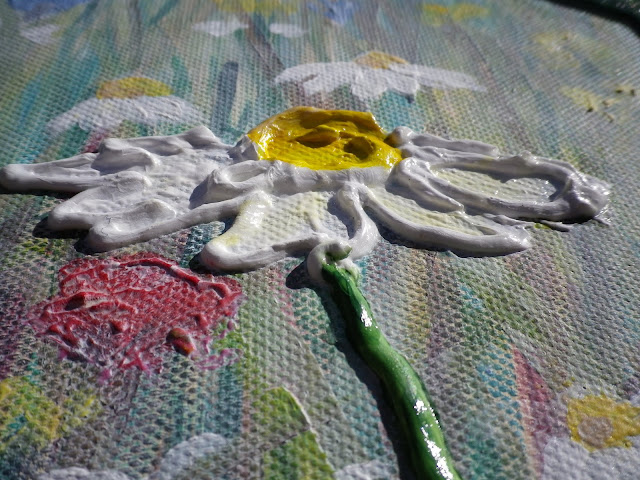Following on from my Rusty Bits post http://sparkartsquaresblogspotcom.blogspot.com/2011/06/rusty-bits.html I have now completed my picture. It took me a lot longer than I anticipated. Whilst painting this I was talking to a friend about the process of making the iron that was used to make the ship that inspired my picture. The iron ore would have to be mined and transported. The coal used to fuel the blast furnaces would have to be mined and transported and then converted into coke and probably be transported again. Limestone would also be required to form a flux for the process. This would have to be quarried and transported. All these material would be processed in a blast furnace and an iron billet produced. This billet would the hammered and rolled to form the iron plates. Steam hammers would probably be used. Again coal and a water supply required. The iron plates would need to be shaped, drill and hot riveted to form the ships hull. Just imagine how much of the earth’s resources and human effort was used to make the hull of this ship. It is highly probable that life was last in one of the stages. Most certainly some of the worker would become deaf from the hammering and some miners would have become ill because of the working conditions. My painting is homage to all these workers.
Now where does ‘Intellectual Property Rights of an Image‘ fit with all this.
First who owns the iron of the ship? It seems to me that as it is now rusting and forming iron oxide (which is what is mined in the first place), ‘Mother Earth’ is reclaiming what is hers. Dust to dust. By this does ‘Mother Earth’ own all rust?
Who owns the image that I produced? Who has the ‘Intellectual Property Rights’ to it?
Consider the passage from ‘The Mirror of Reflection’ by St Francis of Assisi –
“ For in a picture of our Lord and the Blessed Virgin painted on wood, it is the Lord and the Blessed Virgin who receive honour, while the wood and the paint claim nothing for themselves; …..”
Applying this to a secular image, say my ‘The Rusty Bits’ picture, the image, the ‘Intellectual Property Rights‘, must belongs to the rust its self. And therefore to ‘Mother Earth’
The paper and paint that I used were produced using the earth’s resources and as such must also belong to ‘Mother Earth’.
Thanks to Colin for the informing on the forming of iron.
Thanks to St Francis for his words.























